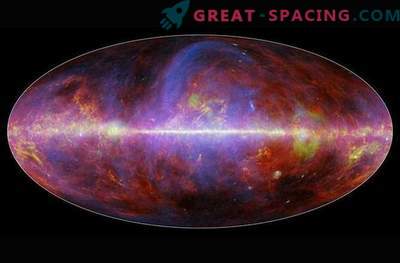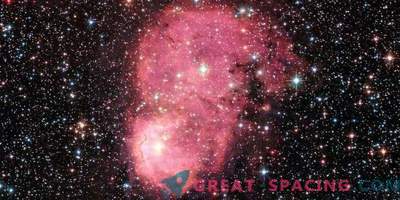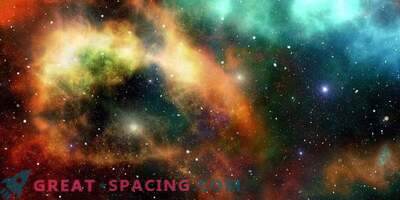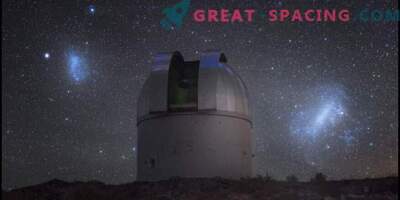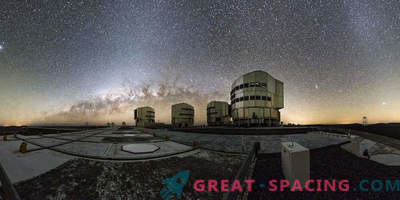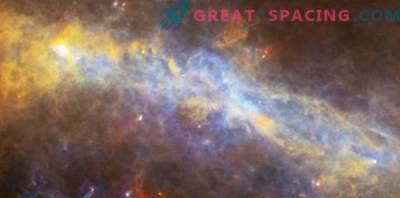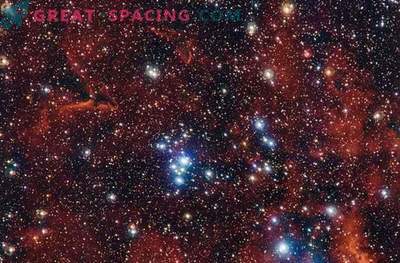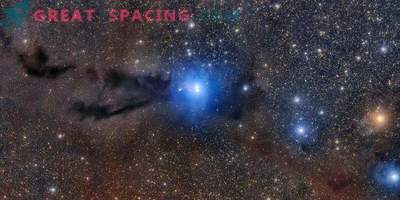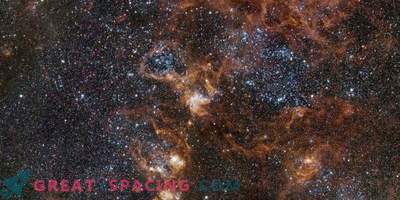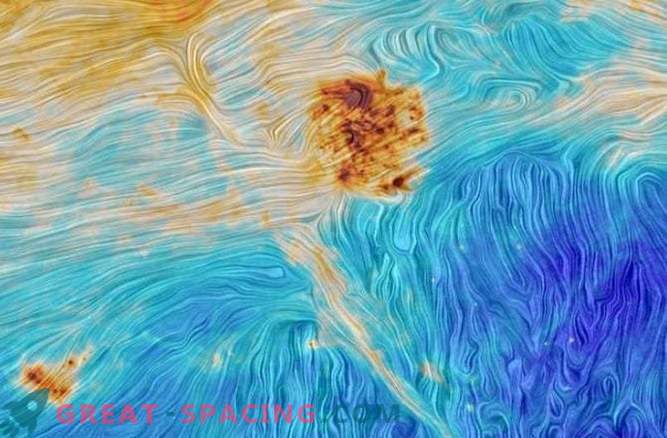
It may look like an enlarged image of a Van Gogh picture, but this is a snapshot of the Large and Small Magellanic Clouds from the Planck satellite of the European Space Agency.
The Magellan Clouds, which are visible only in the Southern Hemisphere, are our closest neighbors. The red-orange clot in the center of the image is the Large Magellanic Cloud, and the Small Magellanic Cloud is a triangular object in the lower left corner.
The satellite "Plank", which functioned from 2009 to 2013, studied the Universe in the microwave and infrared bands. Since his task was to study the cosmic microwave background radiation, the remnants of radiation from the Big Bang, Planck found dust between the stars of the Magellan Clouds and almost all the objects in these ranges - many near and far galaxies and the interstellar medium of the Milky Way. The interstellar dust in the large star cluster of the Milky Way, known as the constellation Chameleon, is seen in the image as a combination of red, orange and yellow clouds at the top. You can also see a large dusty fiber - a stretch from the dense clouds of the Chameleon in the upper left corner to the opposite part of the image.
Although it seems that this fiber is located between two Magellanic clouds, in fact, it is part of our own galaxy at a distance of only 300 light years and with a magnetic field corresponding to our galaxy.
In the lower right part of the image is one of the most fuzzy parts of the sky at the Planck frequencies. It is in blue shades, indicating a very low concentration of cosmic dust, but the vortex-like structures are most likely the noise of the apparatus itself, and not really some feature of the galactic magnetic field.
